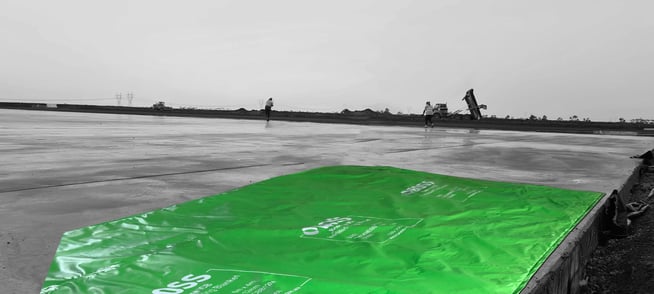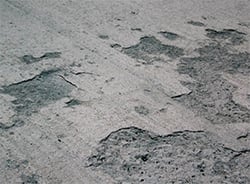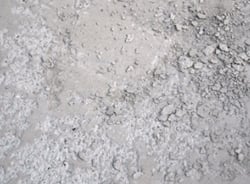
The final strength and cure time of concrete is generally dictated by three conditions;
- Hydration
- Temperature
- Mix design
Whilst concrete manufacturers have a range of accelerants and additives to help slow down or increase the rate of cure, they have little control over the environmental conditions in which the concrete is being poured.
In this article, we’ll cover two different scenarios and how to manage them best.
CURING CONCRETE IN EXTREME AMBIENT TEMPERATURES
The setting of concrete is a chemical reaction, and as in many chemical reactions, the rate of cure is temperature dependent. If the ambient temperature is too low, the development of strength will slow or even stop as it nears 0°C.
If the surface temperature drops below freezing, the water near the surface will solidify, increasing in volume and causing high pressures within the concrete. The increased pressure causes scaling or spalling and can compromise the structural integrity of the concrete.
|
An example of scaling |
An example of spalling |
Thankfully, in most areas of Australia, we don’t normally see the mercury dip this low except in alpine regions.
Thermal curing blankets are designed to insulate the surface and negate the effects of extreme ambient temperatures. Just like we put a jacket on in cold weather to keep us warm, a curing blanket helps regulate the core temperature of the concrete. The blanket also captures the concrete’s inherent heat of hydration, maintaining viable curing temperatures and reducing the risk of extra shrinkage.
Ultimately, curing blankets help concrete achieve its desired strength and quality in a shorter time frame in extreme ambient temperatures.
Whilst curing blankets are available in standard sheet sizes, we can also custom fabricate them to suit irregular shapes and sizes and include Velcro edges for joining or eyelets for securing in place.

For more information on concrete curing blankets, contact us today.
CURING CONCRETE IN WINDY CONDITIONS
Constant wind over freshly laid concrete can have a substantial impact on the hydration of the concrete and can ultimately affect the final strength. The wind wicks away the surface moisture causing the top layer of concrete to cure at a different rate to underlying layers. This can lead to surface shrinkage cracking or in extreme cases, structural cracking. To combat this, a standard curing compound can be applied to the surface to maintain optimum hydration as the concrete cures. For more about these, see our curing compound blog: https://allcongroup.com.au/curing-compounds/



